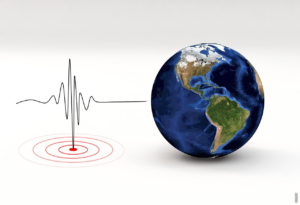Post
Post
Rise and Fall: The Dance of Atmospheric Pressure
The atmosphere surrounding our planet is not static; it is in a constant state of motion. One of the key players in this dance is atmospheric pressure. Atmospheric pressure is the force exerted by the weight of the air above, and it plays a vital role in shaping our weather patterns and climate.
Atmospheric pressure is responsible for the rise and fall of air masses. When air heats up, it expands, becoming less dense and lighter, causing it to rise. As it rises, it cools down, and the moisture it carries condenses, forming clouds and precipitation. This process is known as convection, and it is the driving force behind thunderstorms, hurricanes, and other intense weather phenomena.
On the other hand, when air cools down, it becomes denser and heavier, causing it to sink. This sinking air creates areas of high pressure, which are associated with clear skies and calm weather. Meteorologists often refer to these high-pressure systems as anticyclones. They are responsible for creating stable weather conditions and the formation of deserts.
The Invisible Hand: Temperature Gradients
While atmospheric pressure determines the vertical movement of air masses, temperature gradients drive their horizontal movement. Temperature gradients refer to the differences in temperature across a given area.
When there is a significant difference in temperature between two adjacent regions, air tends to move from the warmer area to the cooler one. This movement is known as wind, and it plays a crucial role in redistributing heat and moisture around the globe. Without temperature gradients, our planet would experience extreme temperature variations, making it uninhabitable for most life forms.
Temperature gradients are responsible for the formation of large-scale wind patterns, such as the trade winds and the jet stream. These winds not only influence our weather but also play a role in shaping ecosystems and determining migration patterns of birds and other animals.
The Impact on Our World
The interaction between atmospheric pressure and temperature gradients has far-reaching effects on our planet. These phenomena shape our climate, influence weather patterns, and even affect the distribution of life on Earth.
For example, the combination of low atmospheric pressure and warm temperature gradients in the tropics creates the perfect conditions for the formation of tropical rainforests. The constant rising of warm, moist air creates abundant rainfall and supports the incredible biodiversity found in these regions.
On the other hand, the presence of high atmospheric pressure and cold temperature gradients in polar regions leads to the formation of ice caps and glaciers. The sinking cold air creates a stable environment where ice can accumulate over thousands of years. These icy landscapes are not only breathtaking but also play a crucial role in regulating global sea levels.
A Delicate Balance
The delicate balance between atmospheric pressure and temperature gradients is essential for maintaining a stable climate on our planet. Any disturbance to this balance can have profound consequences, such as extreme weather events, droughts, or even shifts in climate zones.
Understanding the intricate dance of atmospheric pressure and temperature gradients is crucial for predicting weather patterns, studying climate change, and mitigating the impacts of natural disasters. As we continue to explore and unravel the mysteries of our dynamic atmosphere, we gain a deeper appreciation for the interconnectedness of our world.



